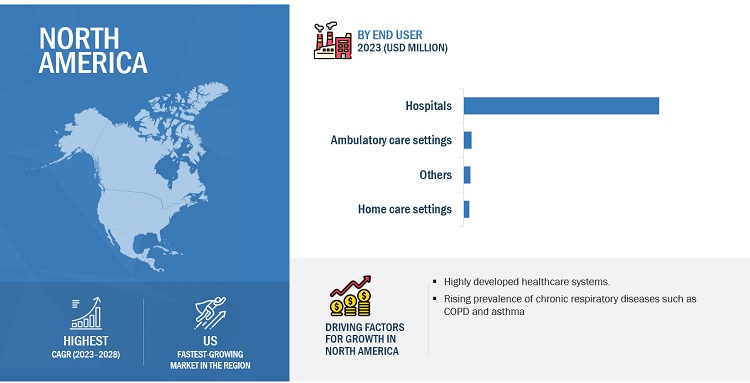The global market for airway management devices is estimated to grow at a compound annual growth rate (CAGR) of 5.6% from 2022 to 2028, increasing from $1.8 billion in 2022 to $2.4 billion by 2028. Several key factors are driving this projected market expansion.
A major driver is the rising incidence of preterm births worldwide. Premature babies often experience breathing issues requiring airway management devices and mechanical ventilation. With preterm birth rates climbing, demand for neonatal/pediatric airway products is surging. Vendors are responding by offering size-appropriate devices for this patient population.
Download a PDF Brochure: https://www.marketsandmarkets.com/pdfdownloadNew.asp?id=116806061
Another catalyst is the increasing prevalence of chronic respiratory diseases like COPD and asthma, which elevates the need for airway management, especially during surgical procedures requiring anesthesia. The anesthesia application segment currently commands the largest market share due to the growing number of surgical interventions globally.
Developing countries represent an attractive growth opportunity for airway device manufacturers. Nations like China, India, and Brazil have large patient populations and are becoming major medical tourism destinations offering affordable surgical procedures compared to developed nations. This is expected to drive demand for anesthesia and associated airway management products.
However, the market faces some headwinds. Lack of reimbursement policies and limited public healthcare coverage in emerging economies restricts adoption of more expensive airway devices due to high out-of-pocket costs for patients. Additionally, a shortage of skilled anesthetists and nurses trained in complex airway procedures like tracheostomies poses a challenge.
Looking at product segments, infraglottic devices like endotracheal tubes are projected to see the highest growth rate, fueled by rising respiratory failure cases. The pediatric patient segment is also anticipated to grow rapidly alongside preterm birth trends.
Geographically, North America currently dominates the global market, benefiting from advanced healthcare infrastructure, high chronic disease rates, and favorable reimbursement policies. However, Asia-Pacific nations are expected to be a key driver of future market expansion.
Major players in the airway management space include Medtronic, ICU Medical, Teleflex, Ambu, and ConvaTec. Recent industry developments include partnerships, acquisitions, and new product launches aimed at enhancing patient safety, broadening portfolios, and tapping new markets.
Overall, while facing some hurdles, the global airway management devices market is forecasted for robust growth over the next several years, propelled by increasing disease burdens, surgical volumes, and healthcare demands across both developed and emerging markets.

Leave a comment